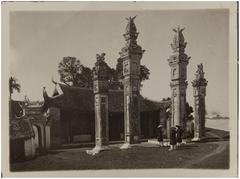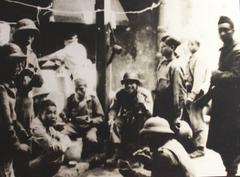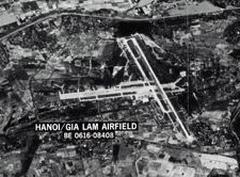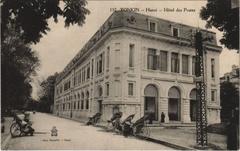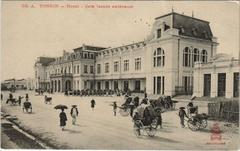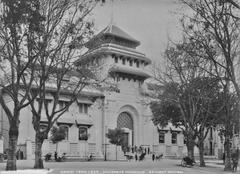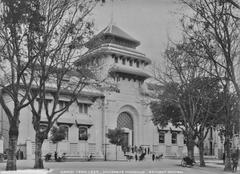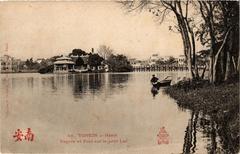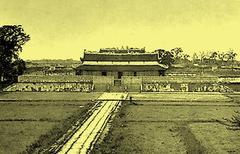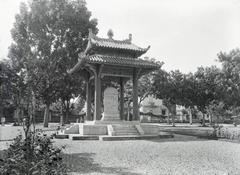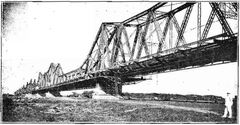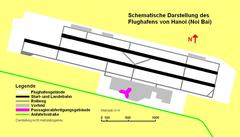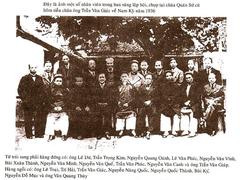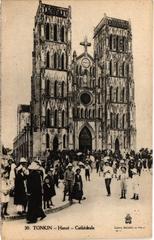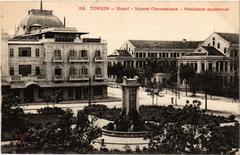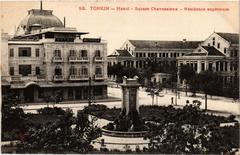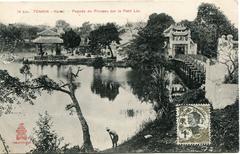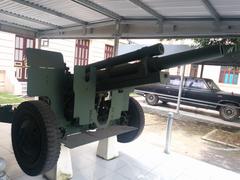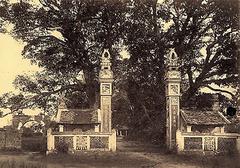Đông Anh Railway Station Visiting Hours, Tickets, and Travel Guide to Hanoi Historical Sites
Date: 04/07/2025
Introduction
Đông Anh Railway Station, just 15 kilometers north of Hanoi’s bustling city center, is both a vital transit hub and a living piece of Vietnam’s railway heritage. Established during the French colonial era, the station’s history reflects the country’s journey through colonial ambitions, wartime resilience, and modern development. Today, Đông Anh serves as a gateway to northern Vietnam’s scenic and historical destinations—most notably Sapa, Lào Cai, and the ancient Cổ Loa Citadel—while offering visitors a genuine glimpse into Vietnamese suburban life.
This guide provides a detailed overview of Đông Anh Railway Station’s historical background, practical visiting information, accessibility features, transportation links to and from central Hanoi, and recommendations for nearby cultural attractions. Whether you are a history enthusiast, railway aficionado, or traveler planning your route through northern Vietnam, you will find all the essential details for a smooth and enriching visit.
For an in-depth look at Vietnam’s railway history and travel planning resources, see historicvietnam.com, Vietnam Train Tickets, and VietnamNet’s urban railway development plans.
Table of Contents
- Introduction
- Early Railway Development in Northern Vietnam
- Strategic and Historical Significance of Đông Anh Station
- Wartime Upgrades and Modernization
- Economic and Social Impact on the Region
- Station Architecture and Local Culture
- Visitor Information
- Train Services and Destinations
- Exploring Nearby Historical Sites
- Practical Travel Tips
- Frequently Asked Questions (FAQ)
- Conclusion
- References
Early Railway Development in Northern Vietnam
The expansion of railways in northern Vietnam began in the late 19th century, driven by French colonial interests seeking improved military logistics and economic integration. The first horse-drawn tramway in Hà Nội debuted in 1885, but it was the construction of main railway lines—like the Hanoi–Dong Dang (completed 1902) and Hanoi–Lào Cai (completed 1906)—that laid the groundwork for modern transport in the north (historicvietnam.com; Vietnam Train Tickets). The influx of workers during this period transformed previously quiet villages into bustling market centers, catalyzing economic and social change.
Strategic and Historical Significance of Đông Anh Station
Đông Anh emerged as a crucial node on the Hanoi–Lào Cai and Hanoi–Dong Dang lines, strategically linking the capital with the northwestern highlands and the Chinese border. Its role as a junction and interchange became particularly vital during periods of conflict. The dual-gauge conversion in 1965 enabled seamless integration with the Chinese rail network, supporting both military and civilian logistics (historicvietnam.com). The station’s location near key industrial sites, such as the Thái Nguyên steel works, further cemented its importance.
Wartime Upgrades and Modernization
During the Vietnam War, Đông Anh’s railway lines were repeatedly targeted by aerial bombardment, necessitating rapid reconstruction and the creation of alternative corridors for critical supply routes. The construction of the Kép–Lưu Xá rail corridor (1965–1966) provided essential redundancy and resilience (historicvietnam.com). In the postwar period, modernization efforts have focused on upgrading signaling, safety systems, and passenger amenities, preserving the station’s historical character while meeting contemporary demands (Vietnam Railways).
Economic and Social Impact on the Region
Beyond its logistical role, Đông Anh Station has spurred local economic growth by facilitating the movement of goods and people between rural and urban areas. The station’s accessibility has attracted workers, traders, and their families, contributing to the area’s cultural diversity (travelshelper.com). Today, Đông Anh is a thriving suburban district within the expanding Hanoi metropolitan area.
Station Architecture and Local Culture
While functional rather than ornate, Đông Anh Railway Station reflects the utilitarian design ethos of mid-20th-century Vietnamese infrastructure. Covered platforms, straightforward waiting areas, and clear signage cater to both commuters and long-distance travelers. The station’s daily rhythms—arrivals, departures, local vendors, and the mingling of residents—offer a slice of authentic Vietnamese life.
Visitor Information
Visiting Hours
- Station and Ticket Counters: Open daily from 5:00 AM to 9:00 PM.
- Train Departures: Typically align with these hours, but check the latest schedules before your visit.
Ticketing and Booking
- At the Station: Purchase tickets at staffed counters; payment in Vietnamese Dong (VND) only (Seat61).
- Online: Book in advance via Vietnam Railways, 12Go.Asia, or Baolau.
- Classes: Options include hard seats, soft seats, and sleeper berths. For example, a soft seat ticket to Lào Cai ranges from 200,000–300,000 VND.
- Pro Tip: Book early during holidays or peak travel seasons.
Getting There
- Taxi or Ride-Hailing: 30–45 minutes from central Hanoi; costs around 200,000–300,000 VND.
- Public Bus: Routes 15, 17, and 46 connect the city center to Đông Anh District. See Hanoi Bus.
- Airport Access: Nội Bài International Airport is approximately 20 km away, reachable via taxi or ride-hailing services.
Accessibility
- Ramps: Present but facilities may be basic; travelers with limited mobility should request assistance in advance.
- Language: English is not widely spoken; translation apps or basic Vietnamese phrases are helpful.
Facilities and Services
- Waiting Areas: Basic, clean seating; digital schedule displays.
- Restrooms: Available but modest—bring personal supplies.
- Food and Drink: Local vendors offer snacks and bottled drinks.
- Luggage Storage: Limited; keep belongings with you.
Train Services and Destinations
- Hanoi–Lào Cai Line: Main route for tourists heading to Sapa and the northern border.
- Hanoi–Dong Dang Line: Connects Hanoi to the Chinese border.
- Bac Hong–Van Dien Line: Supports freight and commuter traffic.
- Schedules: Confirm train times in advance via Vietnam Railways or trusted agencies.
Exploring Nearby Historical Sites
Cổ Loa Citadel
- Distance: 5 km from Đông Anh Station
- Hours: Open daily, 7:00 AM–5:30 PM
- Admission: ~20,000 VND for adults (Mapcarta)
- Highlights: Ancient ramparts, temples, museum, and annual festivals.
Local Markets and Villages
- Markets: Sample fresh produce, street food, and handicrafts.
- Villages: Explore traditional craft communities by bicycle or motorbike.
Practical Travel Tips
- Arrive Early: At least 30 minutes before your train.
- Check Schedules: Schedules can change; always confirm ahead.
- Essentials: Carry snacks, water, tissues, and a travel pillow.
- Weather: Best to visit March–April or October–November; avoid rainy season if possible.
- Safety: Remain vigilant with belongings, especially during busy times.
- Etiquette: Dress modestly, greet locals with “Xin chào,” and seek permission for photos.
Frequently Asked Questions (FAQ)
Q: What are the visiting hours for Đông Anh Railway Station?
A: Daily from 5:00 AM to 9:00 PM.
Q: How do I buy train tickets at Đông Anh Station?
A: At ticket counters (cash only) or online via Vietnam Railways, 12Go.Asia, or Baolau.
Q: Are there luggage storage facilities?
A: Short-term storage may be available on request, but services are limited.
Q: Is the station accessible for travelers with disabilities?
A: Basic ramps are available; assistance is limited, so plan ahead.
Q: What local attractions are near Đông Anh Station?
A: Cổ Loa Citadel, traditional markets, and craft villages.
Conclusion
Đông Anh Railway Station is not just a transit point but a window into the history, culture, and daily rhythms of northern Vietnam. Travelers benefit from convenient access to Lào Cai, Sapa, and the Chinese border, as well as the opportunity to explore significant historical sites like Cổ Loa Citadel. By familiarizing yourself with the station’s visiting hours, ticketing procedures, and local customs, you can ensure a seamless and rewarding travel experience. For the latest updates and travel resources, use official sites and trusted apps.
For further travel advice and detailed guides, download the Audiala app, check our website for related articles, or follow us on social media.
References
- historicvietnam.com
- Vietnam Train Tickets: History of Vietnam Railways
- Vietnam Railways Official Site
- VietnamNet: Hanoi plans to build nearly 600km of urban railway by 2045
- Wikipedia: Rail transport in Vietnam
- Travels Helper – Districts and Neighborhoods in Hanoi
- Seat61: Vietnam Rail Travel Guide
- Mapcarta: Co Loa Citadel
- Hanoi Bus
- Baolau: Train Tickets and Schedules
- 12Go Asia: Train Ticket Booking


